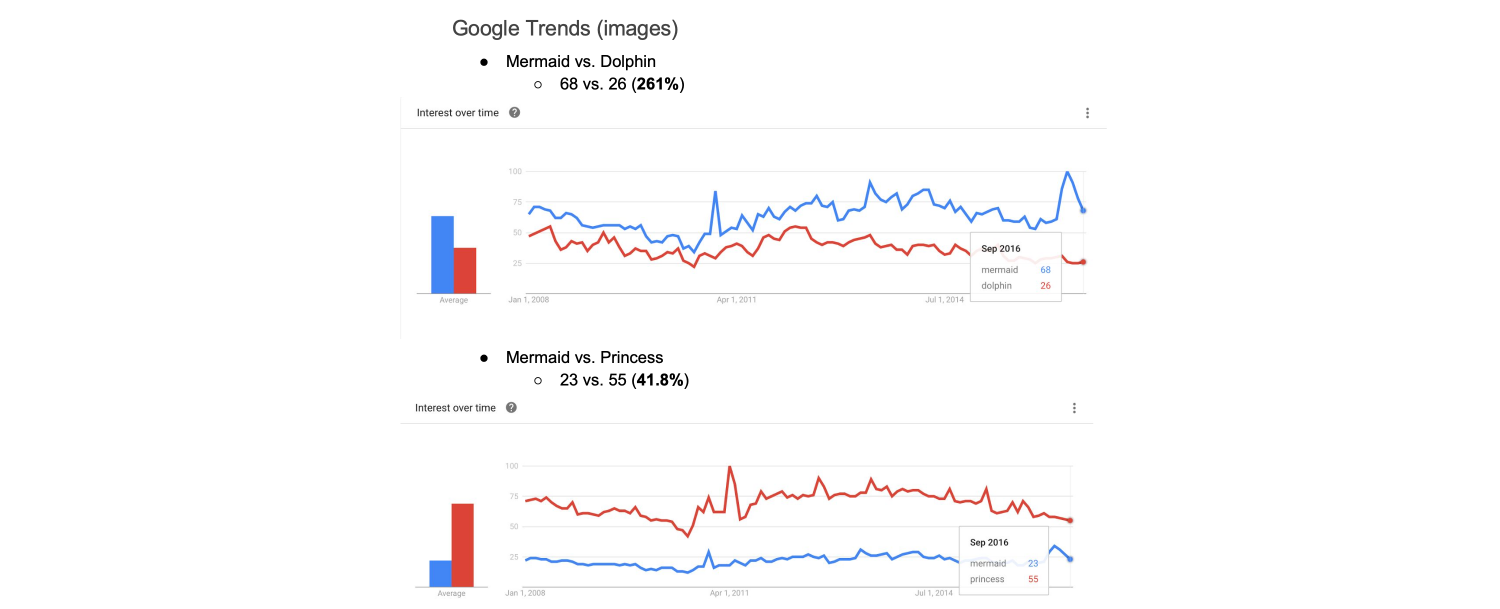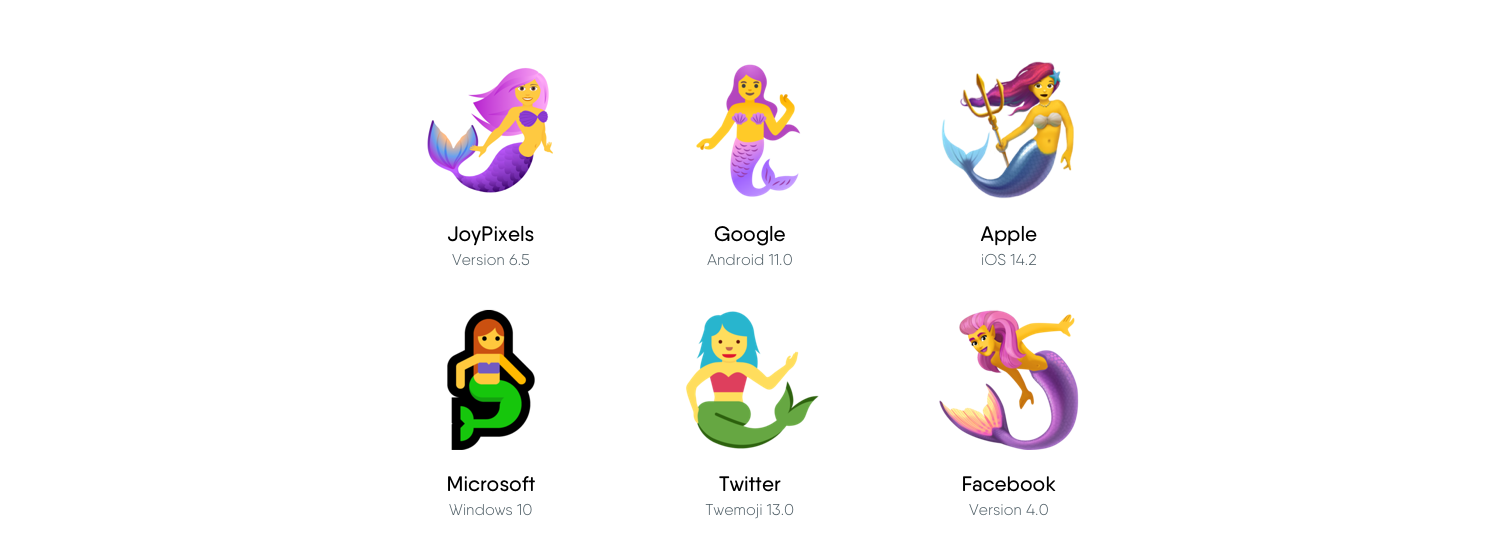Have you ever been messaging a friend and thought “why isn’t there an emoji for this?” Or maybe you’ve noticed an important cultural symbol is missing, or that there’s just no smiley that quite captures a certain feeling. This is how emoji ideas are born.
So when emoji inspiration strikes, what is one to do? 🤷 The fate of all emoji rests in the hand of Unicode, an international consortium that manages the existing emoji library as well as the thousands of new ideas it receives each year (this emoji request chart demonstrates a sampling of their queue). It is to this extremely qualified organization (of which JoyPixels, Apple, Google, Adobe, and other major vendors, along with universities and linguistics experts are members of) that you will plead your case for a new emoji.
In 2016, JoyPixels recognized the absence of a Mermaid emoji 🧜♀️. It seemed a surprisingly missing icon given mermaids' popularity and longevity, and so we set out to propose a Mermaid emoji to Unicode.

Step 1: Emoji Research
Once you’ve had your lightbulb moment 💡, it’s time to see if the rest of the world will see value in your imagined emoji. Unicode needs to know that your emoji will serve a purpose if it is approved and will actually be used. To that end, you’ll need to prove your emoji will be well used, won’t be confused with other emoji, and can’t already be represented by another emoji. For instance, one may suggest a Blu-ray Disc would make a good emoji, but it’s already representable by the existing DVD emoji. Or one might want to include a Hummus emoji, but how would your recipient even know what this brown bowl is? And while a baker might love having a Yeast emoji, would enough other people care to use it?
You’ll need to carefully explain WHY your emoji should be approved and use hard data to back up your claims. Primarily, you’ll need to supply screenshots of Google and Google Trends searches that demonstrate that other people are searching for your term. Your term will need to be on par with other already existing emoji in order to be considered.

Additionally, you’ll need to provide sample images so that Unicode can visualize what you have in mind. Keep in mind, the images you submit in your proposal are simply for the sake of example, and the final emoji will certainly look different.

Step 2: Submitting Your Emoji to Unicode
Once you’ve completed your research, you are ready to submit your proposal to the Unicode Emoji Subcommittee. They require a very specific emoji proposal format which will include your suggested name, keywords, sample images, research, and other information that you think they may find relevant.
The Unicode Emoji Subcommittee will then receive and review your proposal (they meet weekly, though it can take up to 30 days for your proposal to be discussed). If they determine that the proposal is well-formed (i.e. it includes all the required pieces and meets the selection criteria), they will then forward the proposal to the Unicode Technical Committee. The UTC meets quarterly and is charged with the final determination of which emoji proposals are moved from proposal, to provisional candidate, to draft candidate, to final candidate. They typically aim for 50-100 final candidates each year (Emoji 13.0 included 117 new emoji which were added in JoyPixels 6.0).
"Normally proposals need to be submitted to the Emoji subcommittee at least a year before they can appear in a Unicode release." - Unicode.org

Step 3: New Emoji Release
Congratulations! 🥳 Unicode has agreed that your emoji should exist. Now what? Sit back and relax as vendors like JoyPixels, Apple, Google, Facebook, and Twitter design their own versions of your emoji. It can be fascinating to see just how different the same emoji can be portrayed!

The announcement of final candidates typically takes place in March. JoyPixels releases its update with the new emoji (and updated designs) in June or July, and most other major vendors follow suit in the fall. At that point, you will at long last have your emoji available on millions of devices worldwide.
(It should be noted, of course, that nothing in 2021 is following a normal schedule. Emoji 14.0 candidates will be announced in fall of 2021, for a 2022 release.)
Submit Your Own Emoji!
The path of a new emoji from inspiration to release can be a long and winding one, but it is also filled with reward. The Mermaid emoji will always hold a special place in our hearts here at JoyPixels, and there is a certain immeasurable joy in being able to make a linguistic contribution like this to a global audience. So we say go for it, submit your own emoji! And perhaps we will have the privilege of designing YOUR emoji in a future JoyPixels release! ✨




